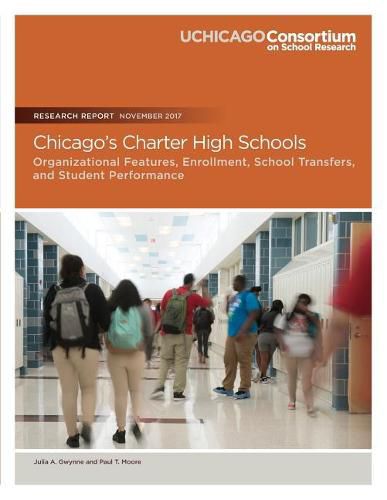Readings Newsletter
Become a Readings Member to make your shopping experience even easier.
Sign in or sign up for free!
You’re not far away from qualifying for FREE standard shipping within Australia
You’ve qualified for FREE standard shipping within Australia
The cart is loading…






This study-the Consortium’s first in-depth look at charter high schools-examines four key dimensions of charter high schools in Chicago Public Schools (CPS): school organization and policies; incoming skills and characteristics of charter high school enrollees; school transfers; and student performance. It expands the existing research base on charter schools in important ways by moving beyond test scores to look at a range of outcomes, and by examining variation among charter high schools. This study finds differences between charter and non-charter high schools in CPS in terms of students’ incoming characteristics, performance in high school, and performance on post-secondary outcomes. It also finds variation on outcomes across charter schools. The study finds charter high schools in Chicago enroll students with higher eighth-grade attendance but similar or lower eighth-grade test scores than non-charter high schools. Once enrolled, students in charter high schools reported more challenging instruction, had higher attendance, and had higher test scores, on average, compared to students in non-charter high schools with similar attendance and test scores in the middle grades. Rates of four-year college enrollment and enrollment in more selective colleges were higher, on average, for students at charter schools than similar students at non-charter high schools. Using the five essentials framework to measure school climate, the study finds, on average, CPS charter high schools looked similar to non-charter, non-selective schools on some dimensions of organizational capacity, such as leadership, but looked quite different on other dimensions, such as preparation for post-secondary. At the same time, the study finds charter high school students were more likely to transfer schools between 9-12th grade than similar students in non-charter high schools. By the beginning of the fourth year of high school, 24.2 percent of students who began high school in a charter school transferred to another school in the district, compared to 17.2 percent of non-charter students. The majority of students who transferred by the beginning of their second year in high school transferred to a CPS non-charter high school. Transfer rates were highest in low-performing or recently-opened charter high schools. The study did not look at the reasons students transferred. Notably, the study also finds substantial variation across charter schools on test scores, college enrollment, and college selectivity. After controlling for differences in students’ incoming skills, experience, and background characteristics, there was far more variation among charter schools on these outcomes, than among non-charter schools.
$9.00 standard shipping within Australia
FREE standard shipping within Australia for orders over $100.00
Express & International shipping calculated at checkout
This study-the Consortium’s first in-depth look at charter high schools-examines four key dimensions of charter high schools in Chicago Public Schools (CPS): school organization and policies; incoming skills and characteristics of charter high school enrollees; school transfers; and student performance. It expands the existing research base on charter schools in important ways by moving beyond test scores to look at a range of outcomes, and by examining variation among charter high schools. This study finds differences between charter and non-charter high schools in CPS in terms of students’ incoming characteristics, performance in high school, and performance on post-secondary outcomes. It also finds variation on outcomes across charter schools. The study finds charter high schools in Chicago enroll students with higher eighth-grade attendance but similar or lower eighth-grade test scores than non-charter high schools. Once enrolled, students in charter high schools reported more challenging instruction, had higher attendance, and had higher test scores, on average, compared to students in non-charter high schools with similar attendance and test scores in the middle grades. Rates of four-year college enrollment and enrollment in more selective colleges were higher, on average, for students at charter schools than similar students at non-charter high schools. Using the five essentials framework to measure school climate, the study finds, on average, CPS charter high schools looked similar to non-charter, non-selective schools on some dimensions of organizational capacity, such as leadership, but looked quite different on other dimensions, such as preparation for post-secondary. At the same time, the study finds charter high school students were more likely to transfer schools between 9-12th grade than similar students in non-charter high schools. By the beginning of the fourth year of high school, 24.2 percent of students who began high school in a charter school transferred to another school in the district, compared to 17.2 percent of non-charter students. The majority of students who transferred by the beginning of their second year in high school transferred to a CPS non-charter high school. Transfer rates were highest in low-performing or recently-opened charter high schools. The study did not look at the reasons students transferred. Notably, the study also finds substantial variation across charter schools on test scores, college enrollment, and college selectivity. After controlling for differences in students’ incoming skills, experience, and background characteristics, there was far more variation among charter schools on these outcomes, than among non-charter schools.